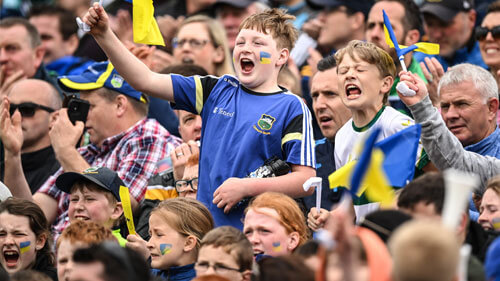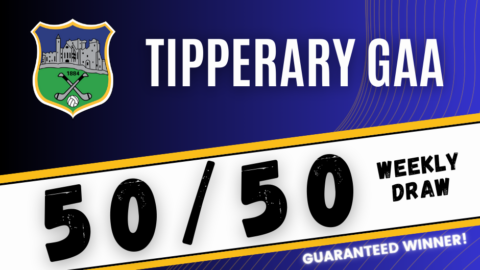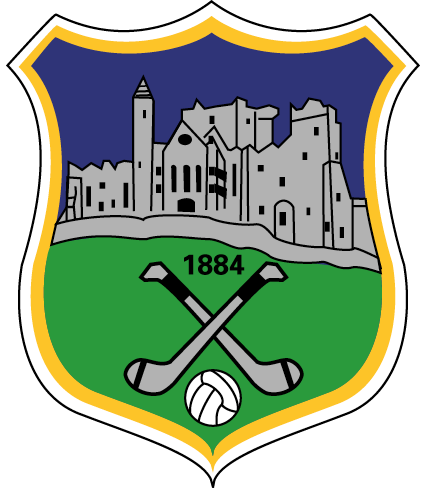Undeniably the most intractable issue facing the GAA is club fixtures. This week the County Board faces a plethora of proposals and suggestions in a bid to improve structures, but, I’m afraid, past experience would caution against any great expectations.
The All Ireland replay this year has helped bring added focus to the issue here in Tipperary. We failed to make Munster club deadlines in both senior football and intermediate hurling. The football has still to be completed, though nobody raised too much fuss about missing Munster because Kerry was providing the opposition.
However, Moyne\Templetuohy were understandably put out by not being able to represent their county after their breakthrough year in hurling, which saw them return to senior ranks after a long hiatus.
All of this serves to underline the dysfunctional nature of our championship structures. To outsiders Tipperary’s systems are incomprehensible. The pre-eminence of the inter-county season is part of the issue but our own structures are a greater obstacle.
In the case of senior hurling don’t expect any radical change because the present system, voted in at a January meeting in 2013, is scheduled to continue until the end of 2017. By then our pool of senior hurling teams will be reduced to twenty eight. Change is snail paced.
There’s widespread agreement that we have too many senior teams with many of them not up to standard. Voluntary re-grading would help though clubs tend to guard their senior status as a badge of honour and are very reluctant to drop to intermediate. There are rumours of internal debates going on in some quarters though as yet no firm indication that any club is willing to opt for intermediate.
Identifying the clubs at risk isn’t difficult. In the West both Cappawhite and Kickhams face precarious futures. Boherlahan in the Mid is in a similar place. Up North some observers would see Moneygall and Borrisokane as clubs likely to face relegation battles. The South has lost Davins and Ballingarry went to the edge this year before rising emphatically to the challenge in the relegation final against Cashel K.C.
The problem then is clear though finding a solution, one that will win majority approval, is far more difficult. In the county final programme Seamus O’Doherty, a long-time advocate of reduced senior numbers, suggested the two tiers of the county championship should be labelled senior A and B respectively with promotion and relegation between them. It sounds a sensible solution though the B sides will obviously have issues with it.
Part of the problem is clearly the divisional structure within our county. Having a tie-up between the divisional championships and the county ones is a complicating factor which puts a major restriction on fixtures. Decoupling divisional and county championships would clearly simplify matters but again the great wheels of democracy will stymie any moves in that direction.
One quoted statistic from this year’s senior hurling championship is eye-opening. Apparently there were eight-seven games played in county and divisional campaigns before we reached the last sixteen in the championship. Isn’t something crazy about a system which involves so many games before the real championship kicks in?
The problems aren’t confined to senior hurling, of course, so a major revamp of all championships is surely needed.
In the midst of all this dissatisfaction with structures some trends are inescapable. The decline of the West division as a hurling force has been spectacular. Not since the 1950s has the division’s hurling stock been so low and, worryingly, there’s no sign of any immediate improvement.
The golden era of the West was in the eighties and nineties; if you wished to be more precise you could narrow it to the second half of the eighties and the first half of the nineties. It’s no coincidence that the West supplied around half of the All Ireland winning sides of 1989 and 1991. By contrast Conor O’Brien was the only panellist from the division in this year’s final.
The case of Cashel K.C. highlights the slump. In 1991 they were top of the pile, narrowly missing out on an All Ireland club title to Kiltormer. That same year T.J. Connolly captained the club’s U21 side to a county title. The following year they retained their West U21 title but then the rot began to slowly infect. They haven’t won a West U21 in the intervening twenty-two years and on Sunday last T.J. Connolly, as manager, looked on forlornly from the sideline as the club’s latest crop slumped heavily to Clonoulty in the West decider.
2014 has been something of an annus horribilis for the King Cormacs. Relegation was a bitter pill to swallow and if they looked for any slivers of comfort on Sunday last they were surely disappointed. In a one-sided game Clonoulty whacked them to the tune of sixteen points on their way to a fourth West U21 in a row. In fairness the result was similar when the sides met as minors three years ago so presumably this outcome was anticipated.
It was close enough in the first half. Paul Hayes deflected in a Clonoulty goal and they led by eight at the interval. However, the gap widened as the second half progressed and by the end it had all gone very lopsided.
I wouldn’t fault the Cashel players for effort but the hurling gap was simply too wide. The immediate future looks bleak for that fine club though they’re not alone in their difficulties.
For Clonoulty things look more promising but even that comment comes with a qualification. They’ve won seven of the last ten West U21s, five of the last ten minor titles and six of the last ten senior championships. A golden era then? Yes, as far as the West goes, but ultimately their lack of traction outside the division diminishes the achievements.
The lack of a county U21 title is an ongoing Clonoulty regret. This year they’ll face the North champions in the semi-final but it’s going to be a difficult title to win. Nenagh may be fancied up North while Mullinahone were minor champions three years ago and the Mid looks strong too with Sarsfields defending their county crown.
I saw Sarsfields in their Mid semi last Saturday where they had little difficulty dismissing a very young Drom\Inch side. The Sars’ senior players are key. Ronan Maher is centre back with Stephen Cahill at midfield and Billy McCarthy at number eleven. That line of players supplies their main strength. Conor Lanigan is important to the attack, though he only played half an hour last week because of a hamstring injury. Wing back Adrian Ryan caught the eye also.
Incidentally on the Drom side Tommy Nolan is one to watch. He was on the last two county minor panels and has the physique and hurling to progress to bigger things.
The other Mid semi sees Loughmore and Holycross face off next weekend. Loughmore were minor winners three years ago but Holycross have plenty of upcoming talent too so that should be an interesting one.
When the West was awake over twenty years ago the Mid was asleep. In the swings and roundabouts of hurling things are definitely reversed now.




















